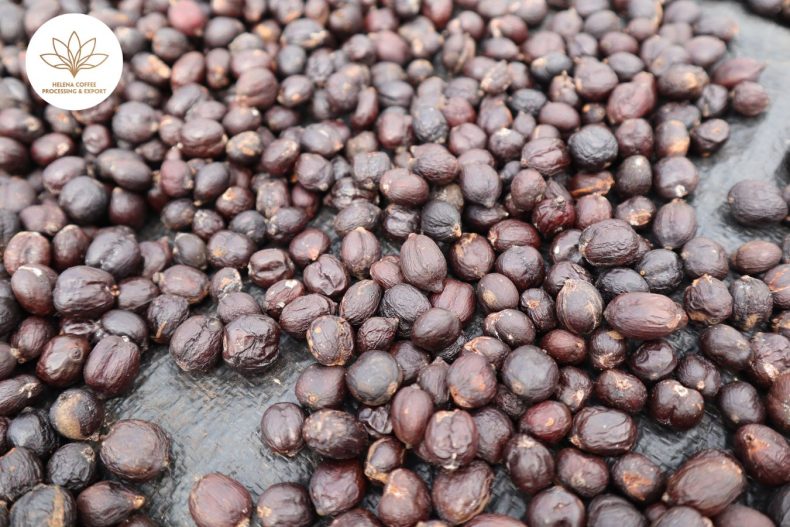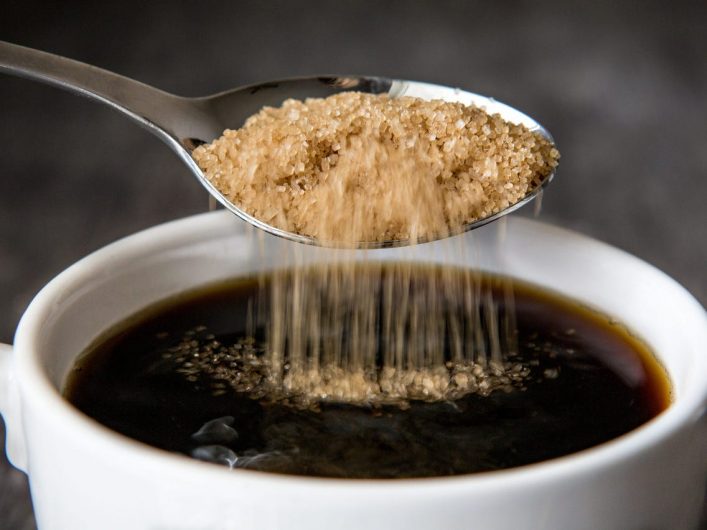
Coffees with natural processing: Coffee’s flavor palette has exploded – washed, natural, honey, anaerobic – unique processing unlocking distinctive tastes. But these methods demand pairing with the proper brewing. Espresso highlights processing’s impact. Naturals, with their fruit and body, excel as espresso. Yet to master naturals in espresso, knowledge is key. As Leif An of Stereoscope Coffee explains, balancing fruit and acidity is essential.
Lower densities and finer grinding help. Altuğ Baser of BOXX Coffee Roasters emphasizes controlling sweetness – adjust dosage down to prevent overpowering saccharine notes. The right processing opens new dimensions, but coffee professionals must understand the interactions. Only through experience do naturals in espresso reach their full potential. In the end, processing inspires creativity – if used thoughtfully.
What defines naturally processed coffee?
To comprehend this, let’s delve into the various stages of natural processing.This method, also known as dry processing, stands as one of the oldest in the coffee processing repertoire, boasting simplicity in execution. However, achieving consistently excellent results with natural processing methods can be challenging without precise application.
In essence, the process involves several straightforward steps:
- After collection and sorting, cherries are spread on raised terraces or patios to sun-dry.
- Cherries remain intact, encompassing both fruit and mucilage (the sticky layer between the outer skin and the parchment surrounding the seed).
- Drying continues until the cherries reach a moisture content of 11 to 12%.
- Regular turning of cherries is essential during drying to prevent mold growth.
- Once dried, cherries undergo pulping, hulling, and transformation into green coffee, ready for export.

Yet, natural processing harbors inherent risks. Dependence on sunlight and warm, dry weather demands precise timing for drying cherries. Failure to adhere to this timeframe increases the risk of overfermentation, resulting in undesirable flavors like stale fruit or sour yogurt. Conversely, excessive drying may lead to issues such as uneven roasting development.
When executed adeptly, natural processing yields captivating and “graceful” fruit flavors, alongside enhanced body and a velvety mouthfeel. Consequently, an increasing number of cafes and roasters are incorporating naturally processed coffees into their menus.
Using naturally processed coffees for espresso
Naturals and espresso prove a powerful pair. Their fruit and body accentuate espresso’s concentrated strength. Yet washed coffees often disappoint as espresso. Brightness overpowers and inconsistencies plague. The difference? Roast mastery. Naturals forgive more, yielding complexity even in large batches. Their low temperature roasting better balances sweetness and fruit. With washed, high-heat roasting risks underdevelopment, making balance elusive. The concentrated espresso then highlights flaws.
For baristas, naturals deliver that sweet spot between approachability and nuance. Their well-rounded flavors appeal broadly while still capturing coffee’s specialty spirit. Washed coffees certainly have their shining moments as espresso. But for fail-safe fruit and sweetness, nothing satisfies like a natural. Their roast-friendly nature makes naturals a trusty partner for espresso perfection, batch after batch.
What about milk-based drinks?
Milk meets its match with naturals’ lush texture. Their inherent cream and yogurt notes effortlessly echo dairy’s decadence. But washed coffees court disaster with the added fats and sugars. Too easily bitterness overwhelms in milky drinks. Naturals’ sweeter, smoother nature though? A cappuccino match made in heaven.
No need to twist washed profiles into milk compatibility. Just let naturals’ affinities shine. Their plush body and fruit marry dairy’s richness, blending familiar flavors customers crave. Of course, dialing in proper extraction remains key – even naturals go sour when under-extracted. But begin with coffee boasting natural dairy parallels, and the barista’s job gets easier. For complete coffee flavor in every creamy sip, no processing pairs quite like naturals. Their natural qualities take the guesswork out of milk pairings.
Guidelines for Optimal Use of Natural Coffees in Espresso
Irrespective of the chosen processing method for a particular coffee, Leif emphasizes the importance for baristas to concentrate on accentuating its inherent characteristics.
“Coffee’s flavors are diverse, shaped by factors such as growth, processing, and roasting,” he notes. “Baristas should prioritize bringing out these intrinsic flavors rather than fixating on achieving a specific taste.”

“To grasp the coffee’s complete potential, it is essential to taste and understand it, regardless of the preparation method employed,” he further suggests.
When specifically delving into naturally C, there are specific considerations for baristas.
Drawing on his expertise, Leif points out that the degassing period for natural coffees tends to be longer than other processing methods. By way of comparison, he highlights that while washed coffees typically take around two weeks to fully degas, naturally processed ones usually require about three weeks. This extended degassing period contributes to an easier extraction of the coffee’s aromatic nuances.
Optimizing Extraction for Naturally Processed Coffees
According to Leif, when preparing naturally processed coffees in espresso form, a longer extraction time is recommended to accentuate their inherent sweetness. Additionally, the natural processing method tends to retain a slightly higher moisture content compared to washed processes, impacting the coffee’s solubility. To counter this, employing a slightly finer grind size proves effective in achieving more delightful and consistent flavors.
Augmenting the yield of naturally processed coffees can further enhance the sweetness and fruitiness experienced in the cup. Altuğ advises initiating with a water-to-ground coffee ratio of 1:2.5 and making adjustments accordingly.
In recent years, natural processing methods have gained momentum within the specialty coffee sector. A growing number of coffee establishments and roasters now feature naturally processed coffees in both filter and espresso offerings.
Particularly in the case of espresso preparation, a distinct approach is crucial for naturally processed coffees to truly showcase their unique qualities. This tailored treatment ensures that customers encounter entirely novel flavor profiles, allowing the distinctive characteristics of these coffees to shine.
FAQS:


